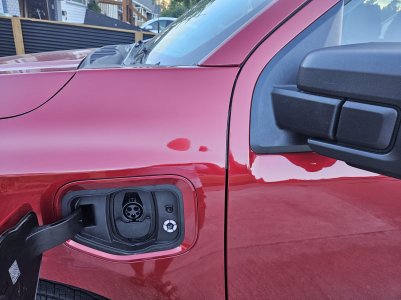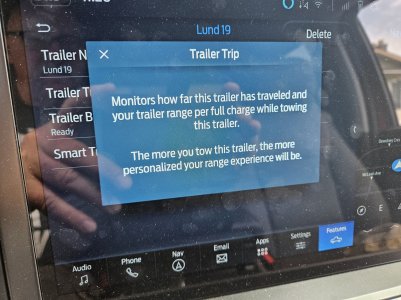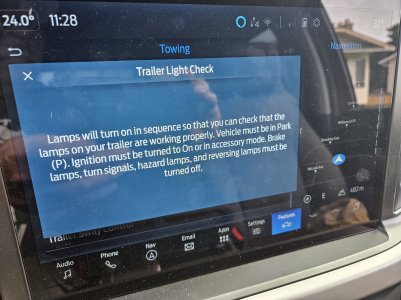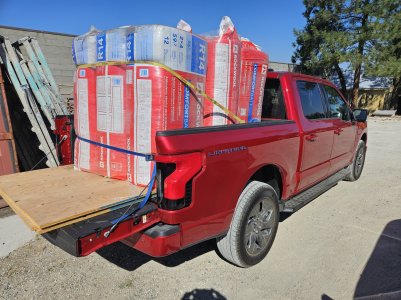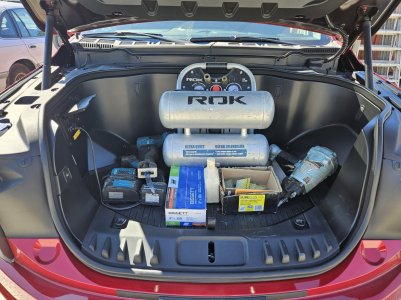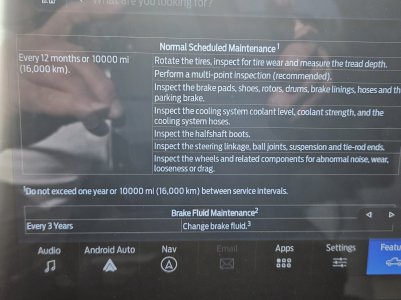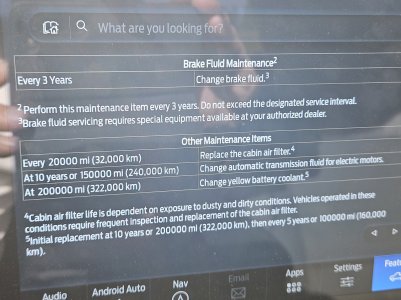Guess I should talk about charging. Most of the time, my truck will charge at home, for convenience and lowest power costs. I can charge at Level 1 (120 volts AC) or Level 2 (240 volts AC). Ford supplies a charge cable that can handle either, mainly intended for use when away from home.
Level 1 is pretty slow, as you're limited to the very modest power throughput offered by a standard outdoor power outlet. Charging from 15% to 85% would take about 46 hours. I would only use this when away from home where I could plug in at the destination and leave it charging for a couple of days.
Level 2 is what most people use at home. My electrician wired up a NEMA 14-50 plug in a location within reach of both driveway spaces. This is a 240 volt AC circuit on a 40 Amp circuit breaker, the same as used for a clothes dryer or a kitchen range. Charging from 15% to 85% takes about 10 hours - ie, overnight.
I could just use the Ford cable at home, but I want to keep that in the truck so I don't forget to take it with me on out of town trips, and I wanted better power consumption tracking, so I bought a Chargepoint home charger. It's connected to phone app which can produce weekly/monthly/yearly reports detailing power use, so I can be reimbursed for business use and provide documentation to CRA.

The charge port on the truck is concealed behind the F150 nameplate just forward of the driver's door. AC power connects via the 5 pin circular connector. The little collection of white indicators light up while charging to indicate charge level at a glance.
